If your organization is just deploying Microsoft Teams, as an admin you will need to manage settings, take remediation actions, and update the way your users collaborate through the Microsoft Teams admin center.
In this blog post, we will share with you 8 ways to manage the Microsoft Teams admin center like a pro. You can access it from the official website.
Private channel creation through Microsoft Teams admin center
If you wish to restrict private channel creation in your organization, you can do that in Teams admin center. There you can determine which individuals or groups of people in your organization can create private channels in Teams.
Private channels facilitate collaboration on sensitive or confidential matters among a group of specific team members. Instead of creating a separate team, they can simply add a private channel within an already existing team.
To manage private channel creation, on the left bar under Microsoft Teams admin center click Teams policies.
Under Group policy assignment you can add a group of users who’ll be able to create channels. Then, in Manage policies tab, you add a new policy for this group, allowing them to create channels.
To restrict private channel creation for the rest of users click on Global policy and disable this capability.
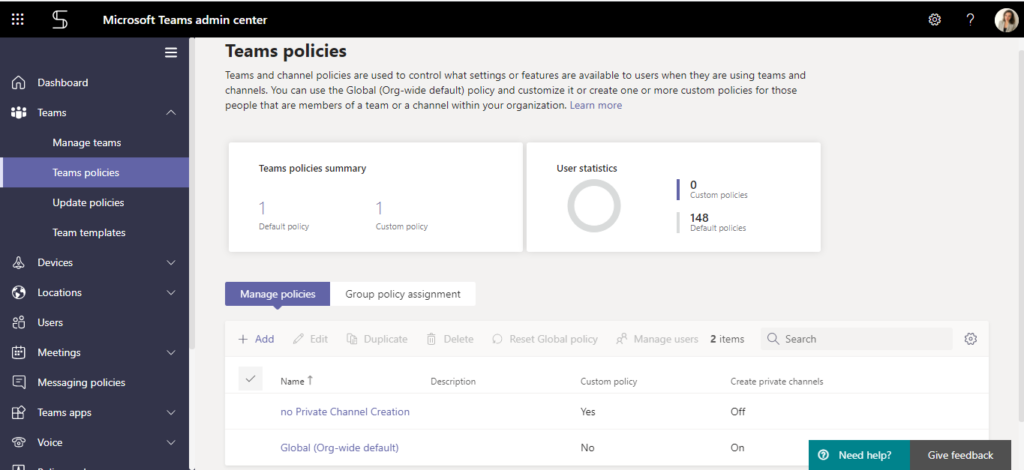
Learn more about how to manage private channels.
Microsoft Teams templates
Templates are pre-built teams with already defined channels, and tabs with different content necessary for faster and more efficient collaboration around a specific business need. They simplify the team creation process for end-users, reduce manual work by removing repetitive tasks, save time and structure workspace.
- To set up templates from the admin center go to Team templates, and then +Add a new template.
- You can build your template from scratch or existing teams or templates as a reference.
- Give a name to your template, short and long description and choose a locale to track the language the template is authored in.
- Finally, add the necessary channels and apps that will be installed in for users when creating a new team, and click Submit.
After a few minutes, the template will be ready, and your users can start using it to create pre-defined teams in just a few clicks.
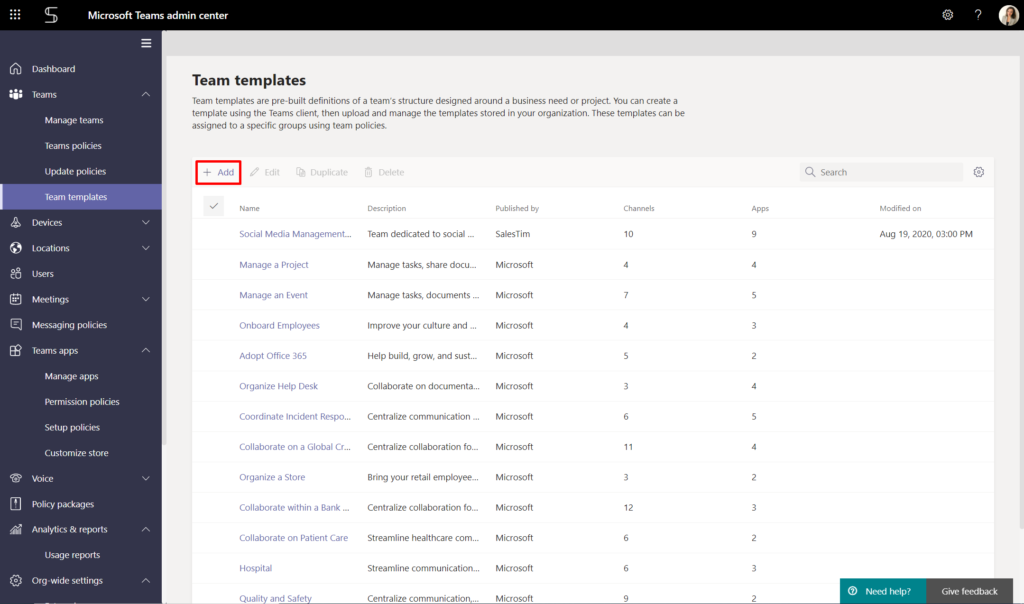

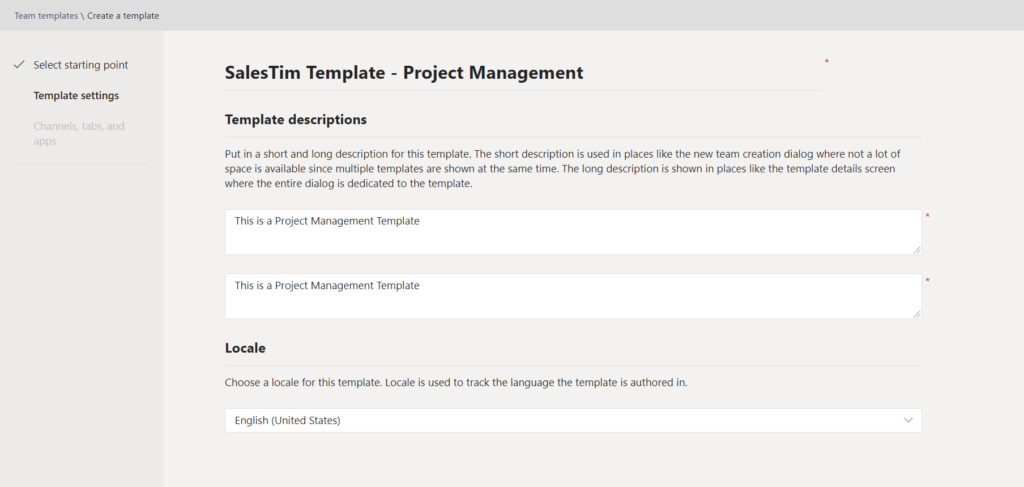
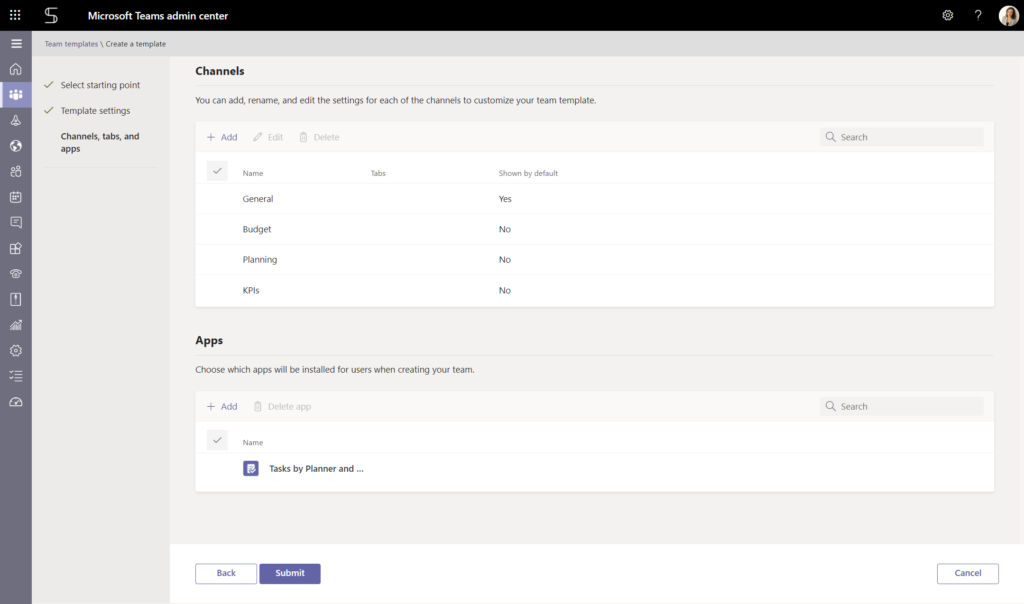
If you’re interested in more business-oriented template capabilities with stronger governance policies, explore Collaboration templates by nBold.
Meetings policies and settings
In the Microsoft Teams admin center, you can manage meeting policies and settings to control what features are available to users when they join Teams meetings.
Teams offers multiple meeting capabilities so make sure your users take advantage of them by customizing your policies. For example, you can enable Meet now feature, scheduling meetings in channels, including private one. You can also allow or restricts cloud recording, transcription of meetings and content sharing, determine guest rights and customize meeting invitations.
To do so, under the Meetings tab select Meeting policies to manage what features are available to users. To introduce a new meeting policy, click +Add and select the right features in General, Audio & video, Content sharing, Participants & guests.

In Meeting settings, you can determine if anonymous users can join a meeting, customize email invitations, or to handle real-time media traffic.

Configuring messaging policies in Teams admin center
By default, all the users in your organization are subject to the same messaging policies configured in the Microsoft Teams admin center. These policies determine messaging experience, such as the ability to edit or delete messages, use gifs, memes and stickers, send voice messages, translate, and other.
If you wish to establish a specific messaging policy for a certain group – for example, external or guest users, you can do so by clicking +Add, creating a name for the policy and then choosing among available features.
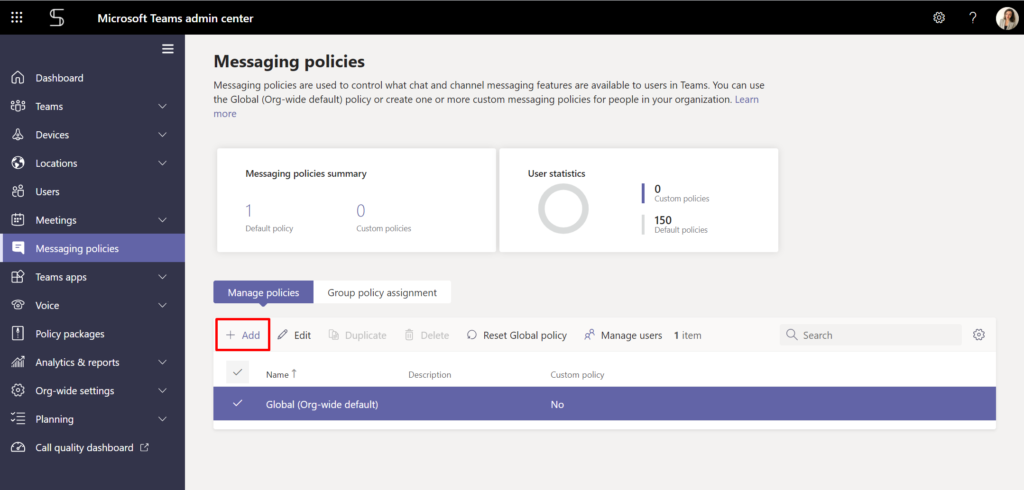
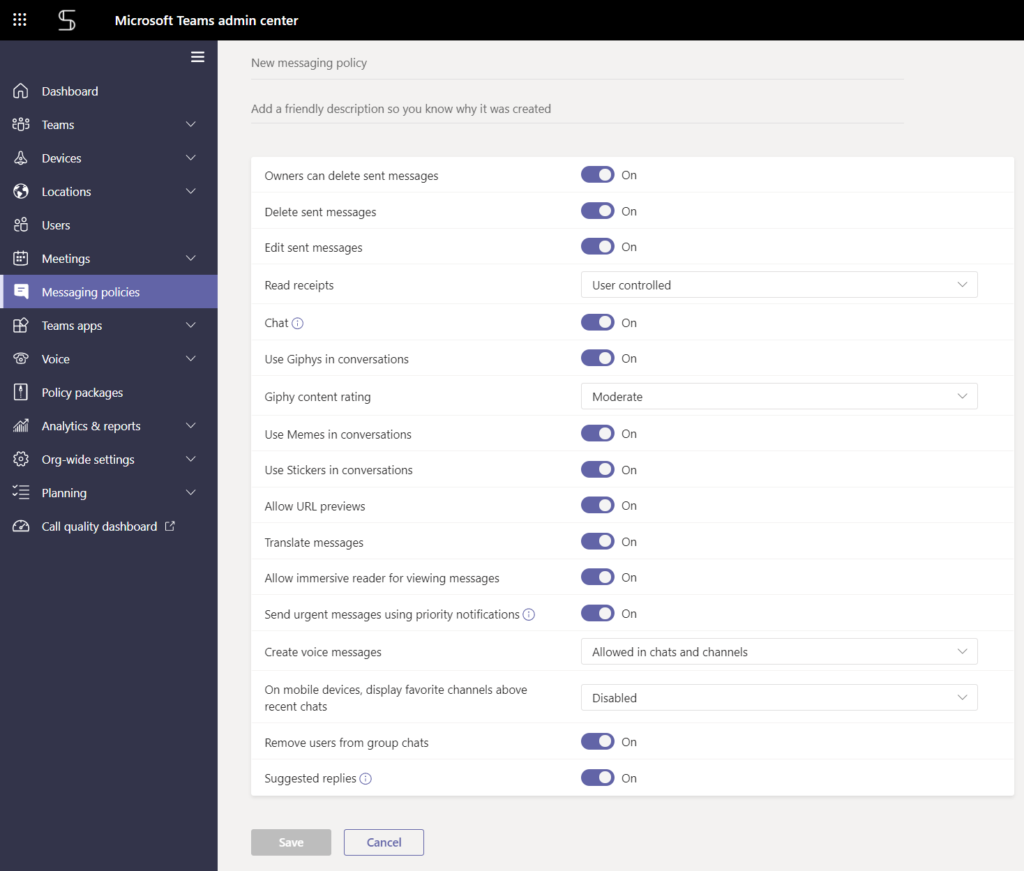
Managing apps
One of the key features of Microsoft Teams for empowering collaboration is its seamless integration with Microsoft and third-party apps. However, open access to external apps can pose data security risks. One of the best practices here will be to control which apps are available to users.
To proceed from the Microsoft Teams admin center, head over to Teams apps tab and then click Setup policies.
You can highlight and pin the most important apps in teams and install them for your users.
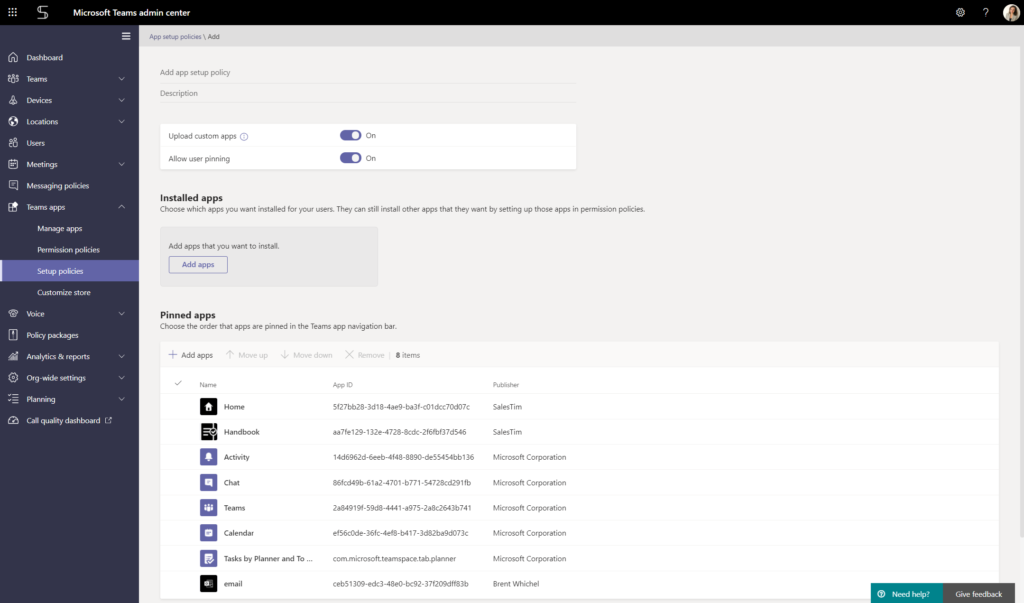
Under Permission policies, you can control what apps you want to make available to Teams users in your organization.
- Allow all apps
- Allow specific apps and block all others
- Block specific apps and allow all others
- Block all apps

Additionally, you can customize your Teams app store by choosing your organization’s logo, logomark and custom background or color.
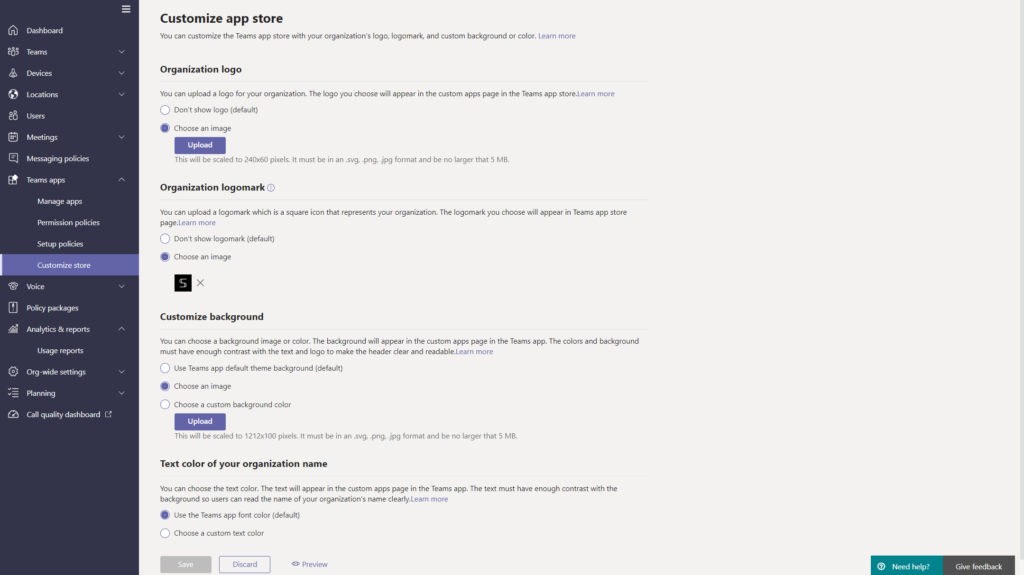
Analytics and reports
You can leverage the Microsoft Teams admin center analytics and reports capabilities to get insights and information about Teams usage. These reports can help understand better users’ needs and gaps in understanding Teams, and make respective business decisions.
Reports on apps usage, Teams device usage, Teams user activity among others are available for 7, 30 and 90 days date ranges.
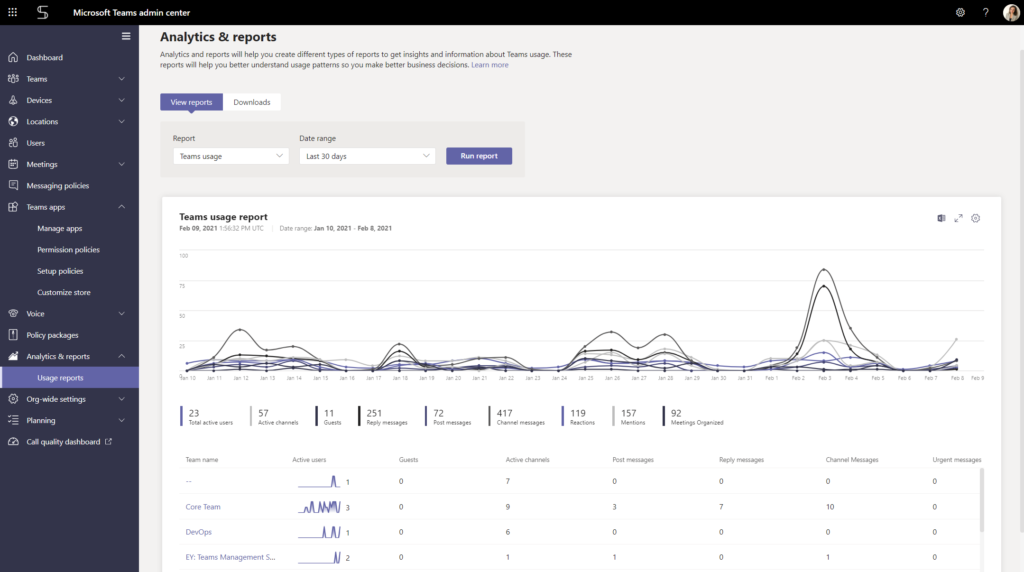
External and guest access
In Microsoft Teams your users can communicate and collaborate both internally and externally.
External access allows your Teams and Skype for Business users to message and meet with users outside your company. By default, your users can communicate with all external users. You can block certain domains, thus allowing your employees to communicate with all other users, or you can add allowed domains, which will block all the rest.
Guest status, in the meantime, enables external users to access your teams and channels. To protect your organization’s data you can limit guest access by enabling only limited number of features. For example, you can disable screen sharing capability.
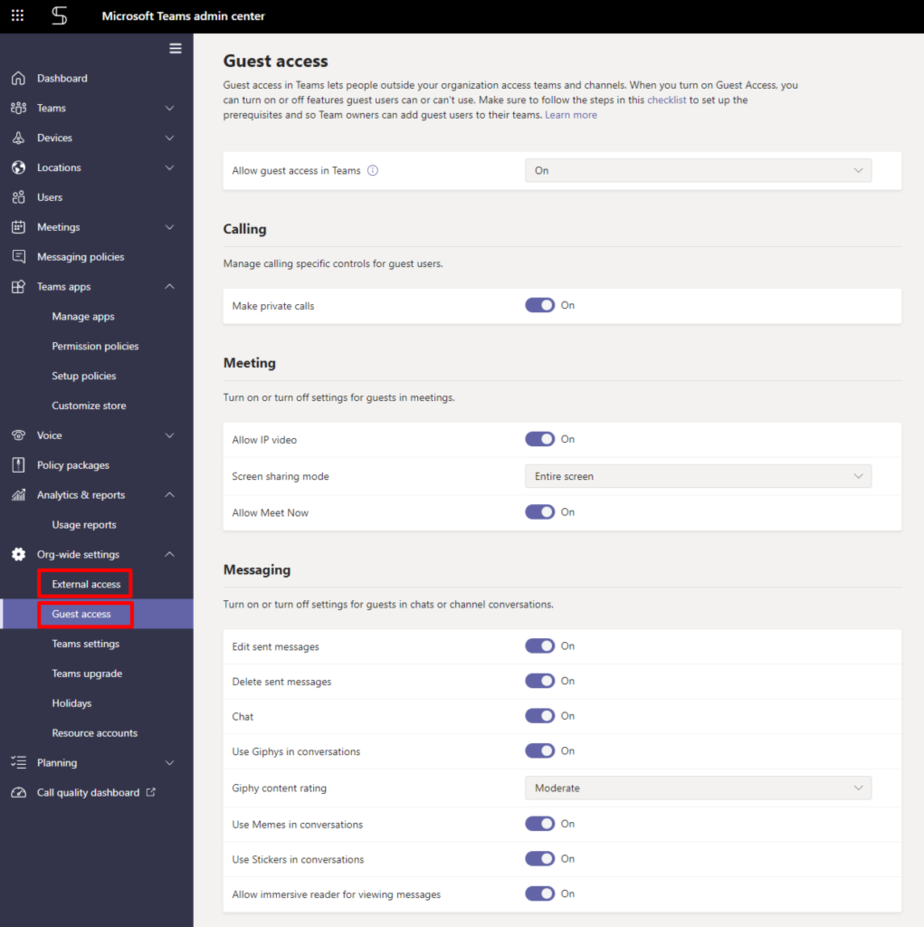
Relying on groups for policies
Within each organization, especially in large ones, there are different types of users with specific needs. You can tailor your Teams policies for each group of users, making it easier to grant or restrict access to certain Teams capabilities when needed. You can assign policies directly to specific individuals, or to groups that these users are members of.

There are many more features you can explore in the Microsoft Teams admin center to better manage Teams and enhance user experience.
If you wish to strengthen the governance in your organization we invite you to read these articles:

